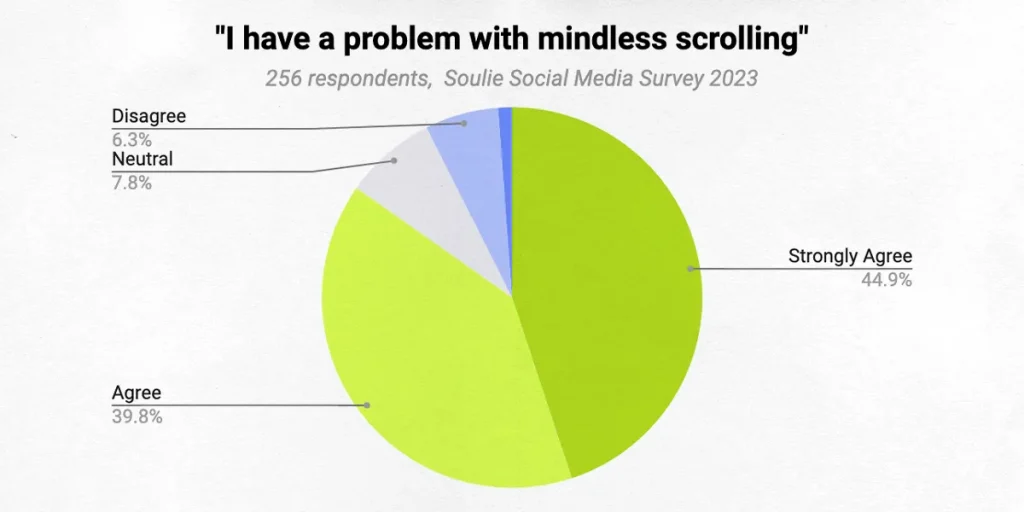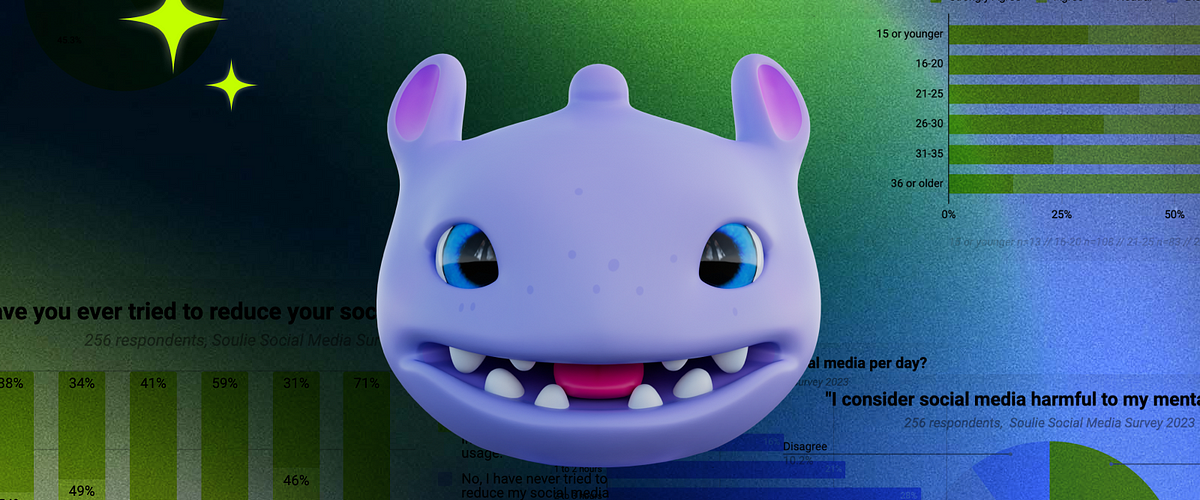The past year, I have been using Soulie as social media. Soulie was an app that introduced “anti-mindless scrolling”. However, the app closed down on July 1st. This blog post will look at the idea behind Soulie, and why the “anti-mindless scrolling” application didn’t work out.
So what was the idea behind Soulie? Soulie aimed to give users more control over the content they were shown. With sliders, users can select the mood of the content (positive, neutral or negative) and how easy the content is to read (intellectual vs relaxed reading). Users could also select the specific fields they wanted to receive content from, such as: finance, art, and tech.
Based on the user’s preferences, Soulie recommends 10 articles or videos. Although users can refresh for 10 different articles, the number of refreshes are limited each day. After a user has read an article, they review it with a small survey. This gives Soulie some indication of success, and forces the user to evaluate what they just read. Users can also share articles with each other and comment on them.

So why did Soulie not work out? Initially, there was a lot of interest. During market research an overwhelming 84.7% of respondents claimed to have a problem with mindless scrolling. The beta test showed that 85% of users that signed up also actually started using the app. The main issue turned out to be retaining users, as the retention rate was around 5%.
This may give us an indication of why Soulie did not work as an alternative to other apps like Instagram and TikTok. Apps like Instagram and TikTok rely on an addictive experience. Soulie’s experience was not addictive at all. From my experience, using Soulie felt similar to reading a newspaper. Addictions are incredibly hard to break, and as the novelty of Soulie fades, users return to their default apps.
When Soulie was launched, its team introduced a subscription model. Although there had been a lot of interest in Soulie, very few people were willing to pay for it. In hindsight, this seems easy to explain: why pay for social media when there are free competitors? Ultimately, Soulie ran out of capital, and could not sustain its development. The app was shut down on July 1st, 2024.
What lessons can be learned from Soulie? First, it highlights the entry barrier to social media. Acquiring and retaining users is extremely difficult without a large marketing team or addictive product. Second, it emphasizes the challenge of monetization in the field of social media. Users are accustomed to free services and balk at the idea of paying for social media. Soulie’s subscription service was a deterrent to mass adoption. Lastly, Soulie’s example poses the question whether mindful scrolling is even a need that people have identified on a large scale. Despite a lot of interest, most people returned to their old habits shortly after signing up for the app. From my own experience, I occasionally used Soulie, but kept Instagram as my default social media. Soulie could be compared to some gym memberships; signed up for with good intentions, but ultimately largely unused.
In the end, Soulie serves as a reminder that, although there is an interest in mindful social media, competing with tech giants for attention, particularly without an addictive product, is an uphill battle.
What do you think of the concept of mindful scrolling? Do you think a platform for intentional social media would have been viable under different conditions, or is it a lost cause?
References:
[1] https://souliehq.medium.com/results-soulie-social-media-survey-2023-part-i-687b594e4e09

